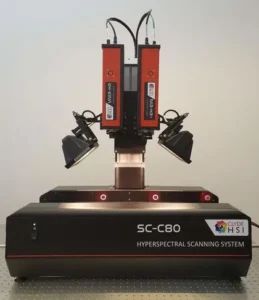Recycling is a fundamental practice of environmental protection as it effectively preserves valuable raw materials, mitigates climate impact, and contributes to curbing the escalating global waste occurrence. Hyperspectral linescan camera’s are used more and more in the recycling industry. In the below application note you can read why using a hyperspectral camera for recycling can be beneficial for you.
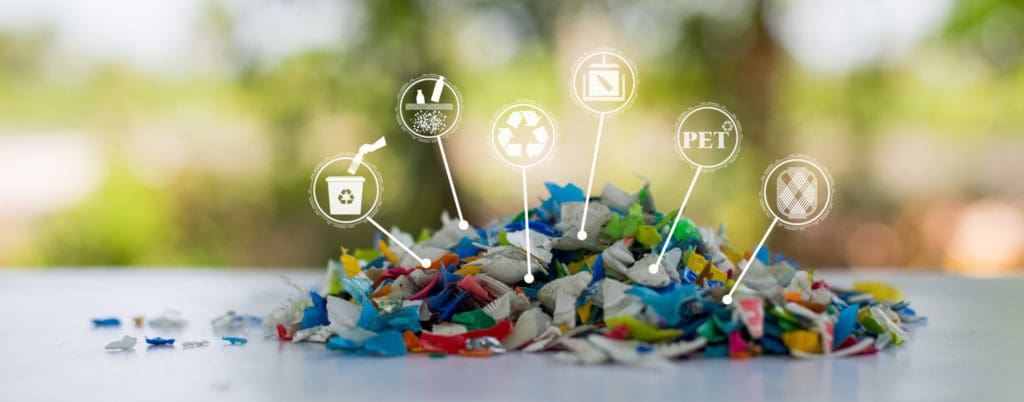
Achieving streamlined and effective quality monitoring through HSI (Hyperspectral Imaging).
Many have achieved commendable recycling rates. Nevertheless, the emphasis lies not only on the quantity of recycled material but also on its quality. Whether dealing with household waste, construction debris, or industrial refuse, efficient circular economies necessitate automated and swift removal of recyclable materials from the waste stream, sorted by type. INNO-SPEC’s Hyperspectral linescan camera’s play a vital role in this process and using an pyperspectral camera for recycling. They enable the differentiation of various materials and reveal coatings, contaminants, and elemental components. These cameras are capable of handling waste particles as small as millimeters and objects measuring half a meter or more in diameter. With their high recording speed, precise results, and efficient data analysis tools, the sorting process is accelerated, ensuring a consistently high quality of recycled materials.
Application example: Plastic Recycling
Plastic is a diverse material, varying in properties depending on its base polymer, such as PE, PP, or PVC. Preserving these specific properties after recycling is crucial for efficient recycling processes. To achieve this, precise sorting is essential. INNO-SPEC’s HSI cameras play a pivotal role in accurately differentiating plastics based on their polymer type, whether they are in the form of shredded flakes or entire plastic parts like bottles. Moreover, these cameras are capable of recognizing additives or coatings, allowing for effective sorting and adherence to specified upper limits for admixtures.
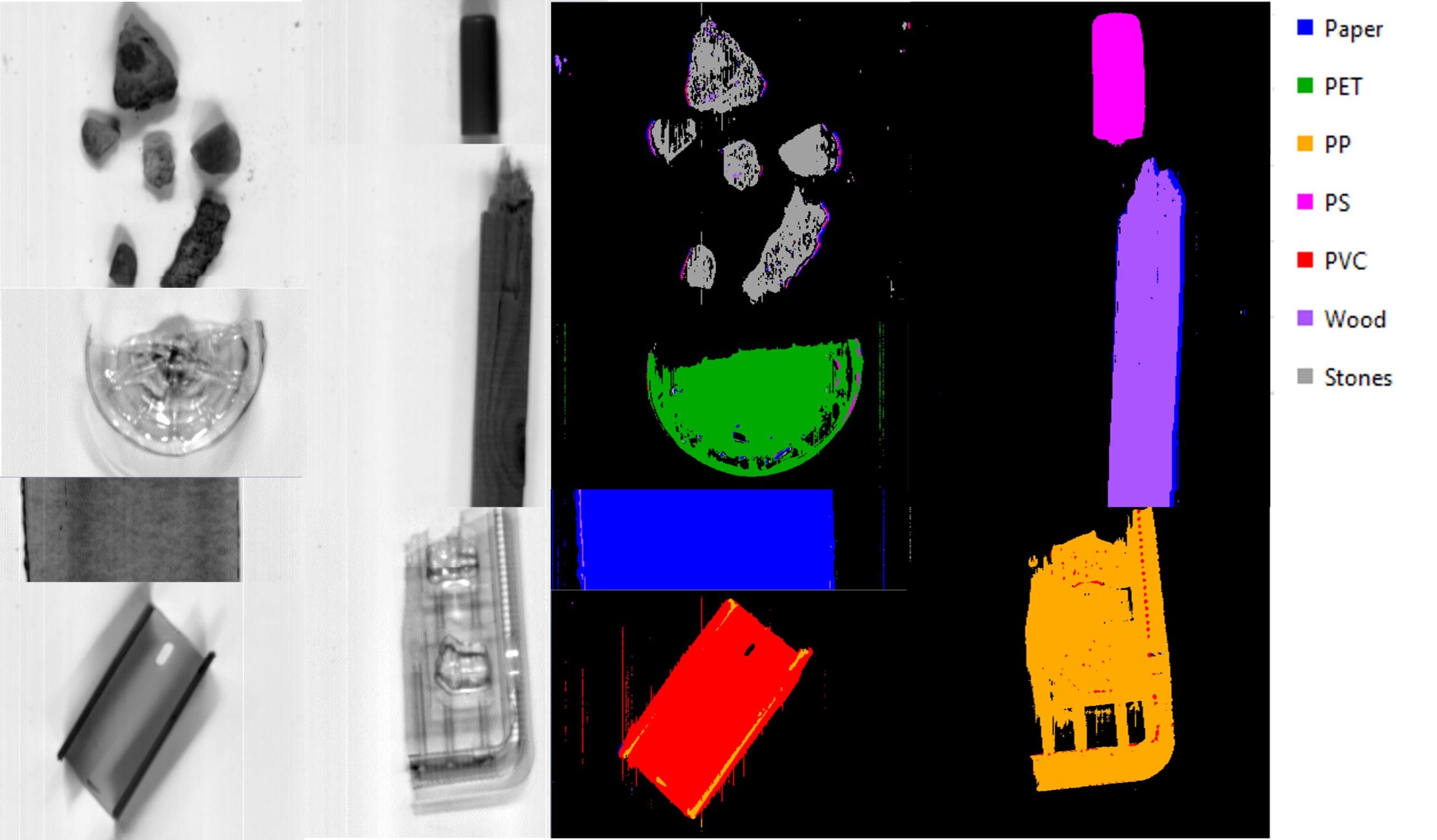
Color is another significant sorting criterion. Recyclates composed of mixed colors often result in grayish materials that are only partially suitable for high-quality plastic items. Transparent or colorless recycle materials are best suited for effective coloring. The combination of RedEye and ColEx systems, which measure both NIR and color information, can efficiently separate polymer types and identify colorfulness versus transparency in a single operation. This comprehensive approach enhances the recycling process and ensures the production of high-quality plastic items.
Application example: Paper Recycling
Paper recycling involves a multifaceted process, as it presents challenges on two fronts. Firstly, foreign objects like metal clips or plastic films often find their way into paper and cardboard recycling containers. Secondly, even “pure” paper comes in various forms, differing in cellulose fiber length, orientation, and functional additives. To ensure the highest quality of recycled products, paper must be sorted into subgroups with similar properties.
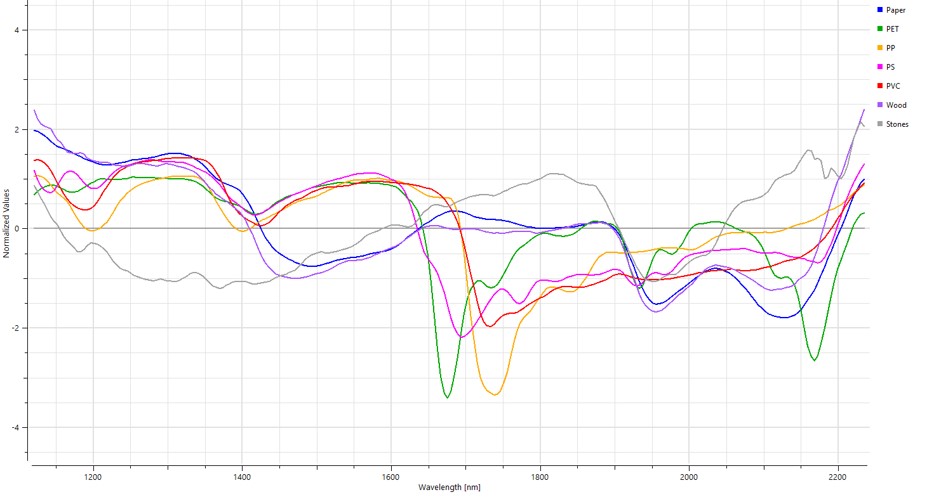
INNO-SPEC’s HSI cameras play a crucial role in this endeavor. They possess the capability to identify foreign substances and heavily soiled cardboard, ensuring their removal from the recycling stream. Simultaneously, these cameras can thoroughly analyze papers, assessing their specific properties. This comprehensive analysis facilitates efficient sorting, resulting in an improved quality of the recycled items. By combining these capabilities, HSI cameras contribute significantly to enhancing the paper recycling process.
Application example: Building Materials
Building materials account for a significant portion of the world’s raw materials, and currently, the construction industry faces growing challenges due to resource scarcity. Consequently, the recycling of building materials is becoming increasingly vital. Similar to plastics, the key principle here is efficient separation, which directly impacts the quality of the recycled materials.
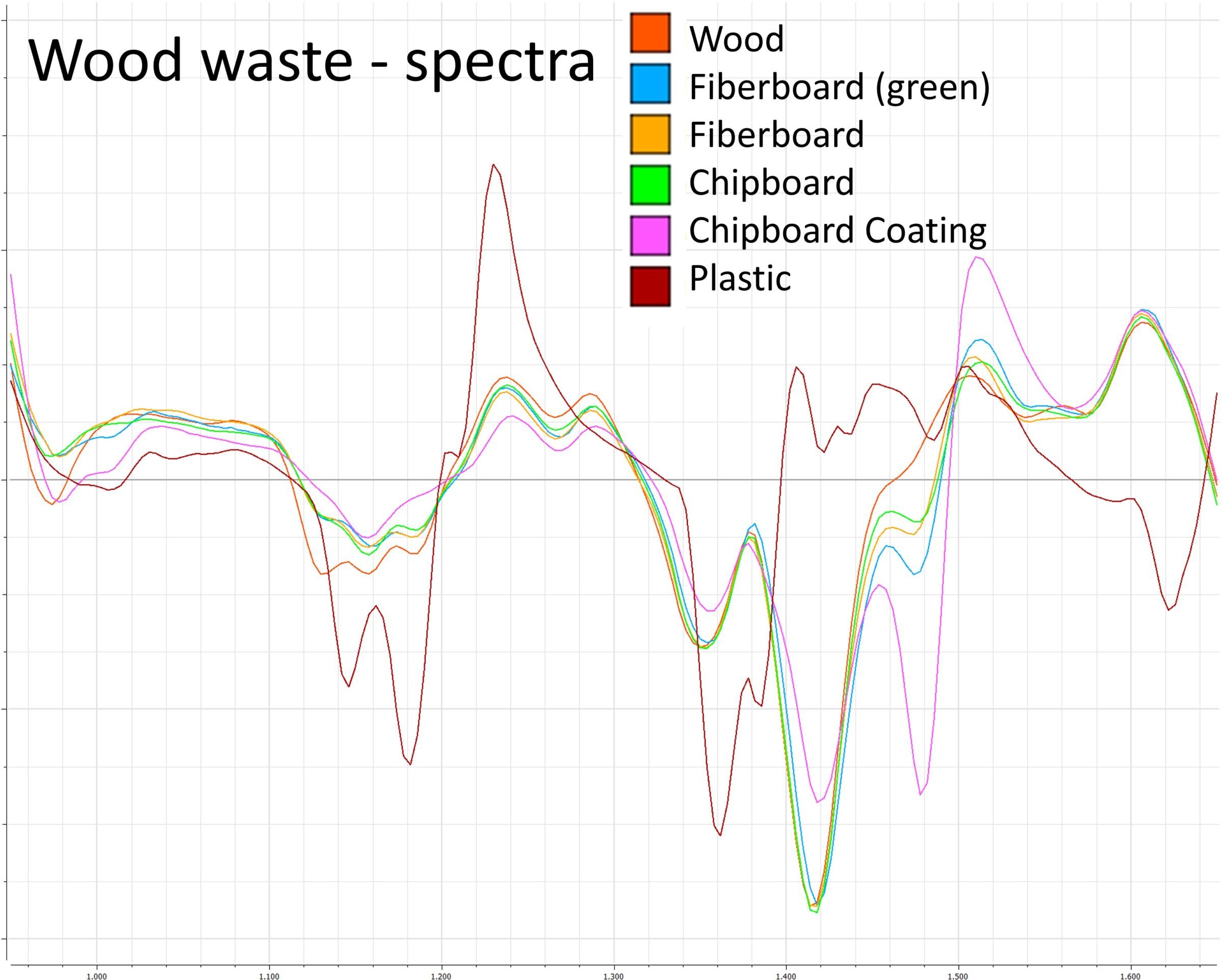
INNO-SPEC’s HSI systems play a crucial role in achieving fast and efficient sorting of all types of construction waste. They excel in separating wood waste into distinct categories like pure wood, plywood, or OSB boards. Additionally, these systems facilitate the sorting of mineral building materials, such as stone, concrete, or burnt clay. Furthermore, they are capable of detecting asbestos, simplifying its proper disposal. The versatility of the HSI systems also extends to separating plastics, including insulation materials, foils, and pipes. With their advanced capabilities, these systems significantly contribute to optimizing building materials recycling and addressing the challenges posed by resource scarcity in the construction industry.
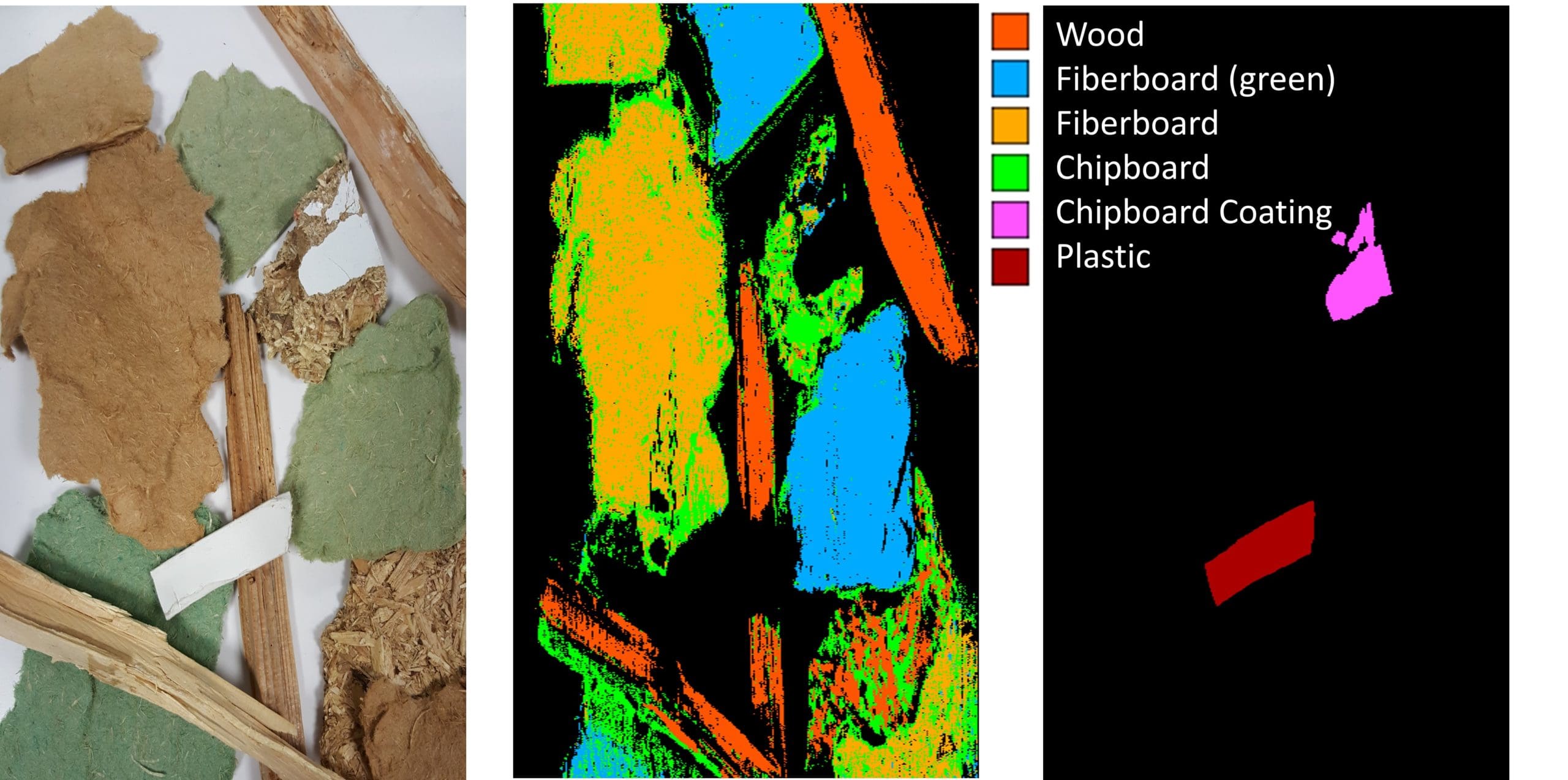
Typical products used
Typical products used for measurements in the recycling industry are either a NIR or VISNIR hyperspectral camera. And in our case a linescan hyperspectral camera. Inno-Spec has designed VISNIR and NIR linescan hyperspectral cameras that can measure from 400 to 2200nm in different steps. They call these spectrometer models either the Greeneye or Redeye.
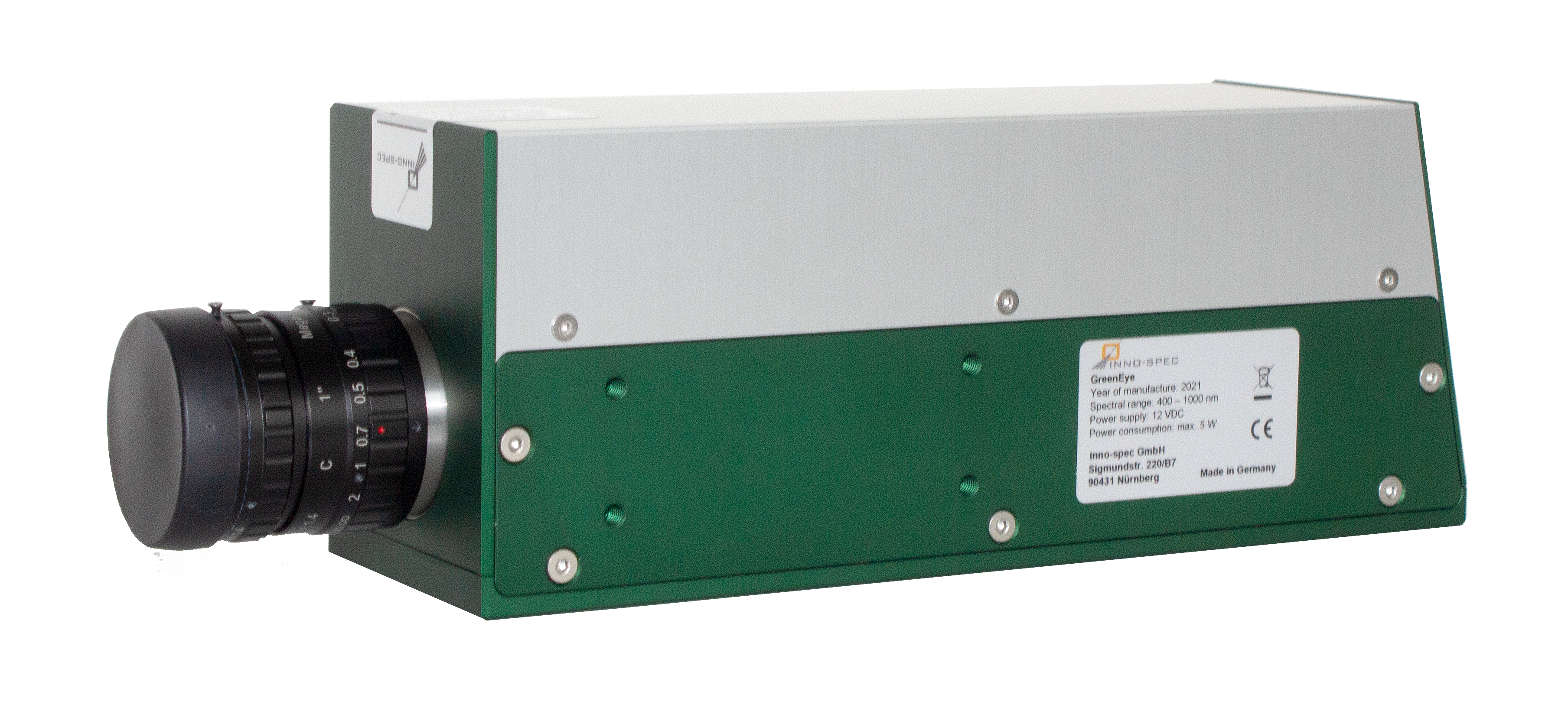
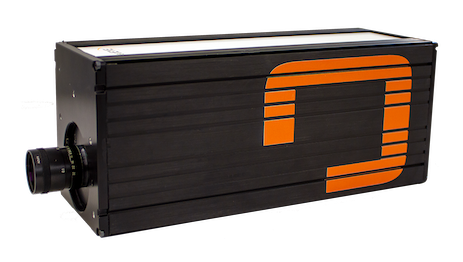
Key Features
What sets the Inno-spec VISNIR & NIR linescan hyperspectral cameras from other brands:
- For use in OEM, industrial and laboratory environments (IP65, IP67)
- Various wavelength option ranges available (400 to 2200 nm)
- Outstandingly good photosensitivity
- GigE Vision Interface
- Regular calibration of the optical components is not required
- Free of moving components and therefore “maintenance-free”
#hyperspectral #linescan #recycling #paper #plastic #wood #quality #QC

